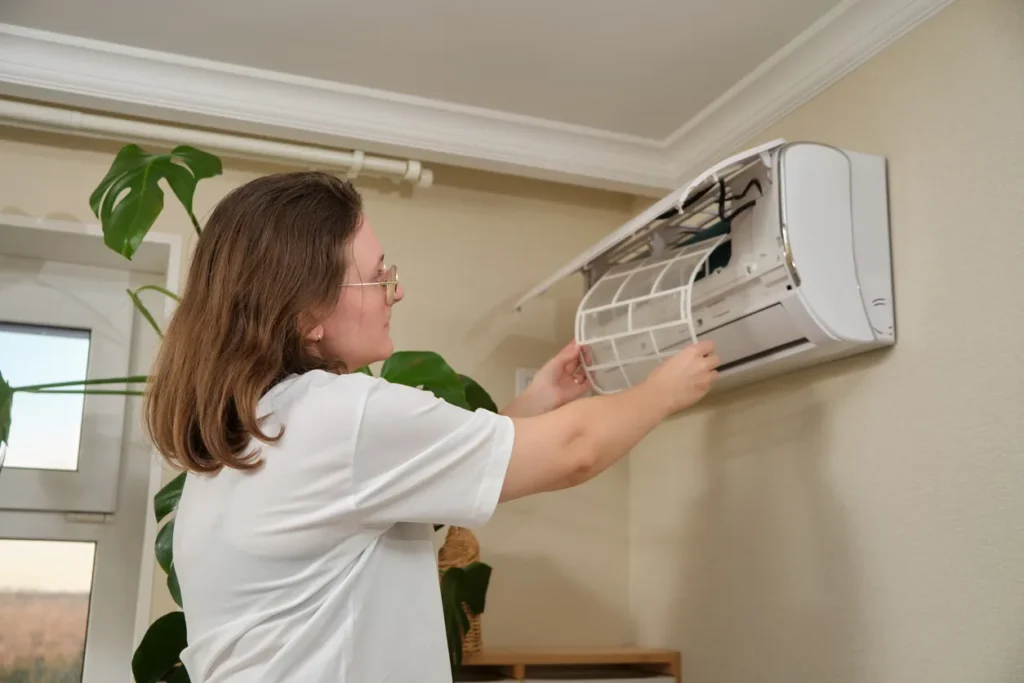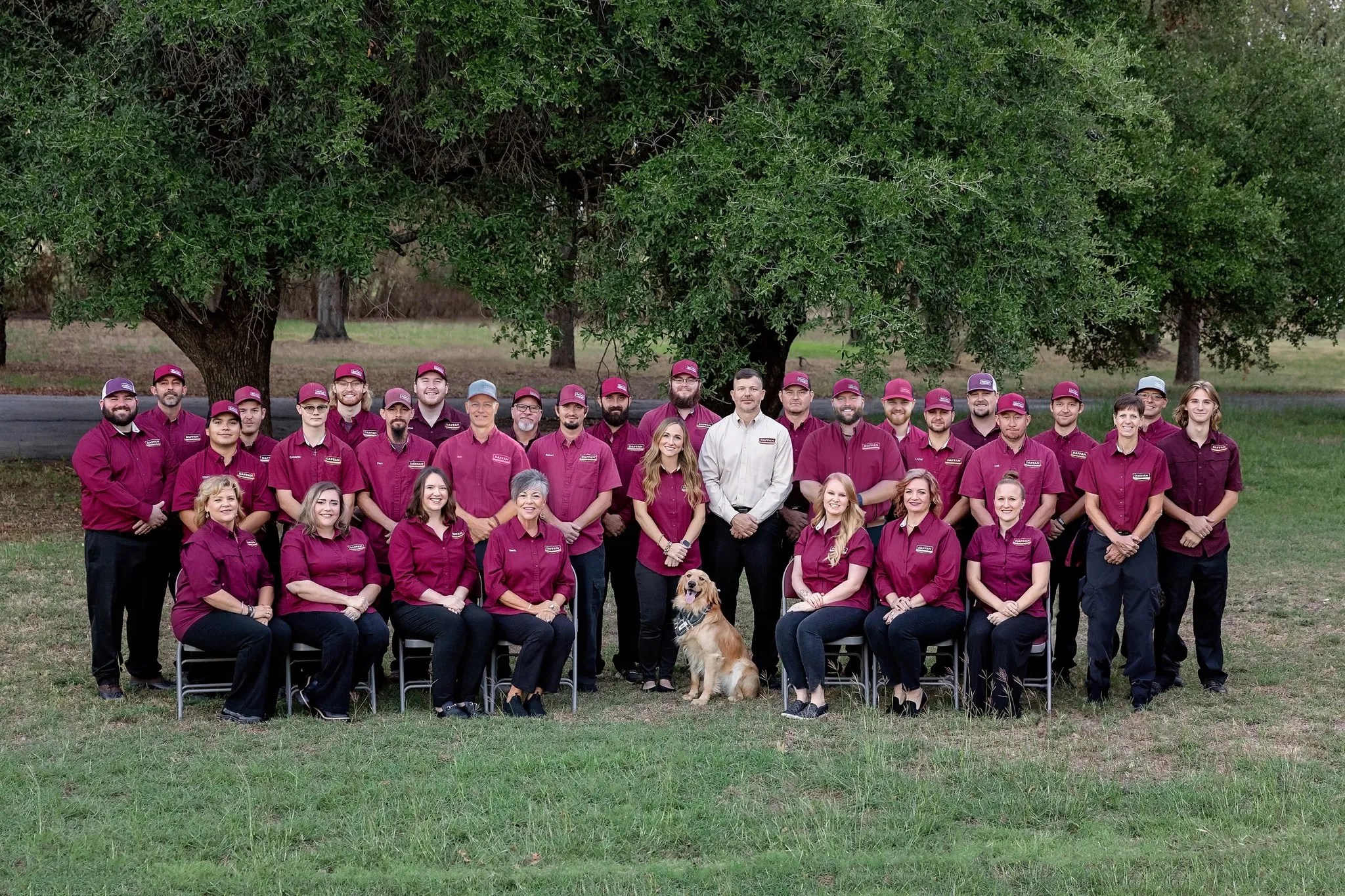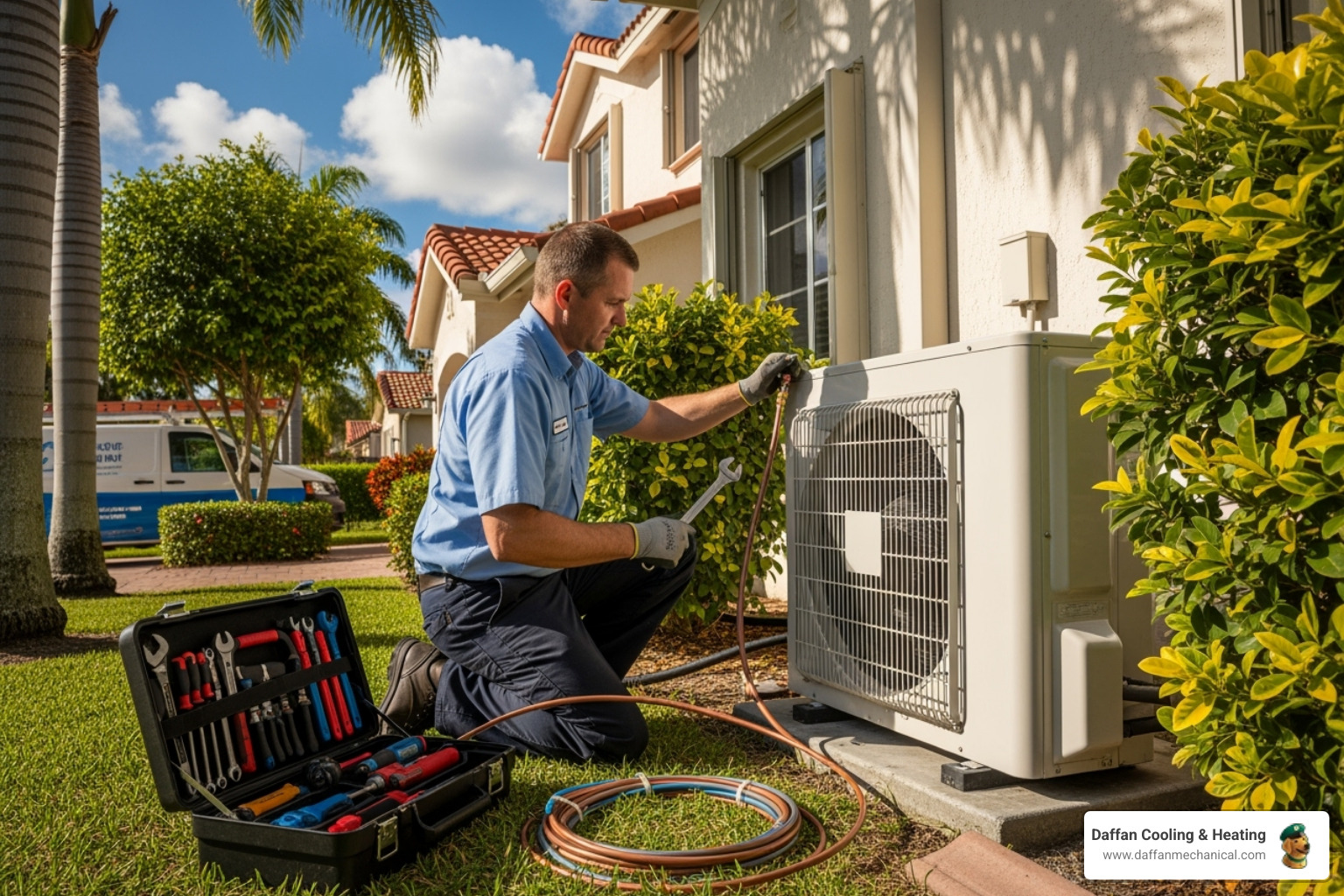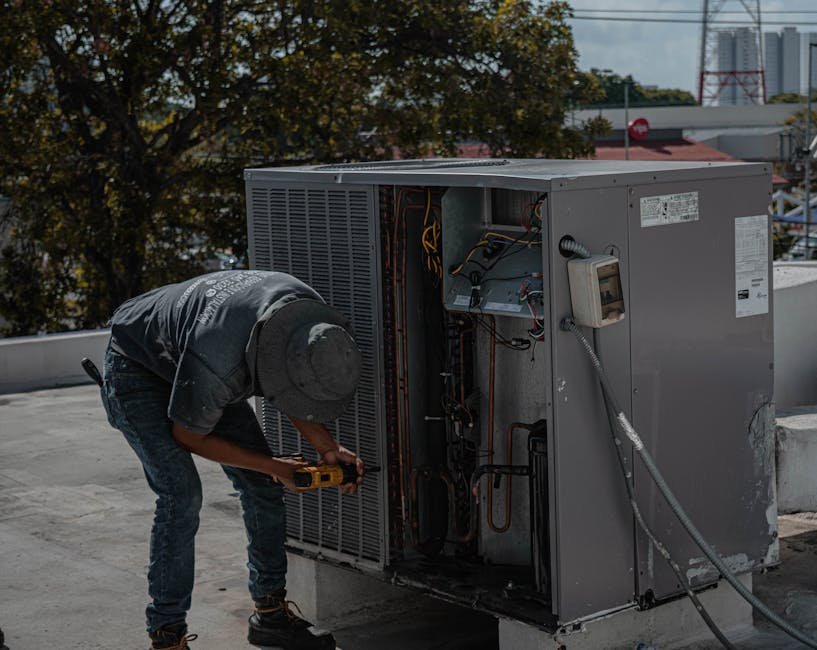DIY HVAC Maintenance: Your Essential Checklist for a Comfortable Texas Home
Keeping your home’s heating, ventilation, and air conditioning (HVAC) system in top shape means reliable comfort, lower energy bills, and better air quality inside. In the Texas heat of Granbury, Weatherford, and Stephenville, a little DIY maintenance can go a long way to prevent unexpected breakdowns and extend your equipment’s life. This guide gives you a practical checklist, easy-to-follow steps, and clear signs when it’s time to call the pros at Daffan Cooling & Heating. You’ll learn:
- The most important maintenance tasks you can handle yourself
- How to swap out your air filter like a pro
- Why cleaning your AC coils is a must in our climate
- Simple furnace care for safety and efficiency
- Easy ways to clear your condensate drain line
- Tips for keeping your outdoor unit in great shape
- How to get the most out of your thermostat settings
- Warning signs that mean it’s time to call for expert help
- The big benefits of regular maintenance for Texas homeowners
With straightforward advice on tools, timing, and techniques, this article will empower you to handle essential HVAC tasks and know exactly when to reach out to Daffan Cooling & Heating for our trusted services.
What Are the Key DIY HVAC Maintenance Tasks for Homeowners?
As a homeowner, you can tackle several fundamental HVAC tasks to keep your system running smoothly, save on energy costs, and maintain healthy indoor air. By safely changing air filters, cleaning coils, clearing condensate lines, and tidying up around your outdoor unit, you’ll address most common wear-and-tear issues. These simple steps act as your first line of defense against inefficiency and surprise failures, working hand-in-hand with your annual professional tune-ups for maximum system life and your peace of mind.
Which HVAC Maintenance Jobs Are Safe for DIY?
DIY HVAC maintenance focuses on straightforward, non-invasive procedures that only require basic tools, minimal disassembly, and common-sense safety practices. Tasks like swapping out air filters, clearing away debris from your outdoor unit, flushing condensate drain lines, and testing your carbon monoxide detectors are all well within a homeowner’s capabilities. These actions help reduce dust buildup, prevent moisture clogs, and improve airflow without risking your system’s integrity or voiding warranties.
How Often Should You Do Basic HVAC Maintenance?
Performing routine HVAC tasks every three months is ideal for handling seasonal changes in system usage and airborne particles. Replacing your air filter every 1–3 months, checking your condensate line twice a year, and clearing debris around your outdoor unit monthly align perfectly with our peak cooling and heating seasons here in Texas. Sticking to a regular schedule can boost energy efficiency by up to 15 percent, as the EPA notes, and helps ensure your system’s warranty remains valid by showing consistent care.
What Tools and Supplies Do You Need for DIY HVAC Maintenance?
Before you dive into any HVAC task, make sure you have the essential tools and replacement parts ready to go. This will make the job smoother and safer. A basic toolkit should include:
- A multi-bit screwdriver for accessing filter panels and access doors
- A soft brush or fin comb for gently cleaning coils
- A wet/dry vacuum or compressed air for clearing condensate lines
- Replacement filters with a MERV rating of 8–13
- Protective gloves and safety glasses
Having everything on hand minimizes interruptions and helps you work efficiently, all while reducing the chance of accidentally damaging your system.
How to Change Your HVAC Air Filter: A Complete Replacement Guide
Swapping out your air filter is key to preventing dust and debris from restricting airflow, overworking your blower motor, and degrading your indoor air quality. By changing your filters every 1–3 months, you’ll maintain steady airflow, cut down on energy use, and reduce allergens in your home. This core DIY task is quick, budget-friendly, and absolutely essential for keeping your HVAC system running efficiently.
What Types of Air Filters Are Best for Your HVAC System?
| Filter Type | MERV Rating | Typical Use |
|---|---|---|
| Fibreglass | 1–4 | Budget-friendly option for basic dust control |
| Pleated Paper | 5–8 | Standard filtration for most homes |
| High-MERV Pleated | 9–13 | Enhanced allergen and dust capture |
A MERV 8 pleated filter offers reliable dust capture without restricting airflow too much. Higher MERV filters are great for homes with allergy sufferers but might need changing more often.
How to Safely Remove and Replace Your HVAC Air Filter Step-by-Step
- Turn off your system at the thermostat and the circuit breaker to avoid accidental startup.
- Open the return air grille or the filter compartment door.
- Carefully slide out the old filter, paying attention to the direction of the airflow arrow.
- Insert the new filter, making sure the arrow points in the same direction as the airflow, usually towards the blower.
- Securely close the compartment and turn the power back on.
Completing this simple process in under five minutes keeps your airflow unobstructed, your blower motor happy, and your system more reliable.
How Does Regular Air Filter Replacement Improve Indoor Air Quality and Energy Efficiency?
Clean filters trap dust and pollen before they can circulate through your home, which means fewer allergens and less strain on your blower motor. When air flows freely, your HVAC system doesn’t have to work as hard to condition the air, potentially cutting energy consumption by up to 10 percent. Consistent filter changes also prevent dust buildup in your ductwork, leading to better overall air quality throughout your house.
When Should You Call a Professional for Air Filter Issues?
If you notice a persistent layer of dust on your vents, hear strange noises related to airflow, or find your filters clogging up again within just a few weeks, you might have a system imbalance or a blockage in your ductwork. In these situations, it’s best to contact Daffan Cooling & Heating. We can perform thorough diagnostics, check your ducts, or inspect your blower motor to get your system back to peak performance and protect its components.
How to Clean AC Coils at Home: Step-by-Step DIY Guide for Better Cooling
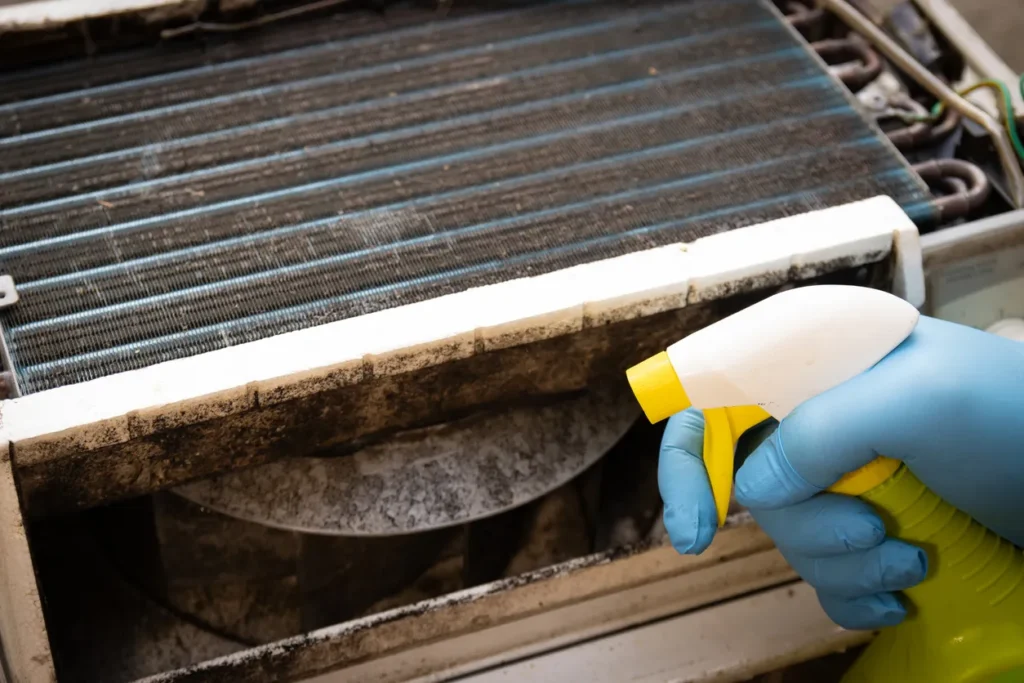
Cleaning the dirt and grime off your AC condenser and evaporator coils is crucial because it allows for efficient heat transfer, directly impacting your system’s cooling power and energy usage. In our hot Texas climate, keeping these coils clean is essential for maintaining peak performance during the summer, reducing the workload on your compressor, and preventing premature wear on vital parts. For more information on maintenance, visit monthly quarterly annual AC maintenance.
What Are AC Condenser and Evaporator Coils and Why Do They Need Cleaning?
Your condenser coils, located in the outdoor unit, are responsible for releasing the heat absorbed from inside your home. The evaporator coils, found in your indoor air handler, absorb heat from your indoor air. Over time, a layer of dust, pollen, and even grease can build up on these coils, acting like an insulator that hinders heat transfer. This forces your compressor to run longer and harder, driving up your energy bills. Regular cleaning restores their ability to transfer heat effectively and helps extend the life of your compressor.
Which Cleaning Solutions and Tools Are Recommended for AC Coil Maintenance?
For effective coil cleaning, you’ll want to have these on hand:
- A soft-bristle coil brush to gently loosen debris
- A no-rinse coil cleaner spray, preferably one with mild alkaline properties
- A fin comb to straighten any bent fins and improve airflow
- A garden hose with an adjustable spray nozzle for rinsing condenser coils
How to Clean Your AC Coils Safely and Effectively: Step-by-Step Instructions
- Shut off the power to your outdoor unit at the disconnect switch.
- Carefully remove the protective grille or side panels to access the condenser coils.
- Use your brush to sweep away loose debris from the coil surfaces and gently straighten any bent fins with the comb.
- Apply the coil cleaner evenly, letting it work to break down the grime.
- Gently rinse the condenser coils with low-pressure water.
- For evaporator coils, spray the cleaner according to the product’s directions and allow the system’s natural condensation to wash away the residue.
Following these steps will boost your cooling performance, lower your operating costs, and make your system more resilient to heat-related stress.
How Often Should You Clean AC Coils in Texas Climate Conditions?
Given our humid and often dusty environment here in Granbury and Stephenville, cleaning your AC coils every six months is a good practice, ideally in the spring before the intense summer heat and again in the fall after the pollen season has passed. This prevents efficiency drops and minimizes strain on your compressor during the hottest parts of the year. For more information on this service, visit air conditioning services.
When Is It Time to Book Professional AC Coil Cleaning or Repair?
If you notice signs of corrosion on your coils, significant fin damage, or suspect a refrigerant leak while cleaning, it’s time to schedule professional service. Daffan Cooling & Heating offers detailed coil inspections, refrigerant leak detection, and can handle condenser replacements to ensure your cooling system operates safely and reliably.
What Are the Essential DIY Furnace Maintenance Steps for Homeowners?
Basic furnace care includes inspecting components, cleaning flame sensors and burners, changing filters, lubricating moving parts, and checking your safety detectors. These tasks help ensure efficient combustion, consistent airflow, and safe operation, significantly reducing the risk of breakdowns and potential carbon monoxide exposure during the colder months.
How to Inspect and Clean Furnace Flame Sensors and Burners
Flame sensors are critical safety devices that detect ignition and shut off gas flow if the flame isn’t stable. To clean one:
- Turn off the power to your furnace at the switch and carefully remove the sensor rod.
- Gently scuff the metal rod with fine-grit sandpaper to remove any soot or buildup.
- Wipe away any residue with a clean, lint-free cloth and reinstall the sensor.
Cleaning the burners involves brushing away soot and ensuring the gas orifices are clear to maintain a steady, consistent flame pattern.
How to Replace Furnace Filters and Check Blower Motors
Replacing your furnace filter is just like changing your AC filter: turn off the power, slide out the old filter, and insert the new one, making sure the airflow arrow is correctly oriented. After the filter change, take a moment to inspect the blower motor housing for any dust accumulation. Vacuum any accessible dust and gently spin the blower wheel by hand to confirm it moves freely and smoothly.
Why Is Carbon Monoxide Detector Testing Critical for Furnace Safety?
A gas furnace, if not operating correctly or if ventilation is compromised, can produce carbon monoxide (CO). Testing your CO detectors monthly ensures you’ll get an early warning of any dangerous buildup, protecting your household from this invisible, odorless threat. Remember to replace your detectors every five years to guarantee their sensors remain accurate and reliable.
How to Lubricate Furnace Components and Inspect Ductwork
Apply a small amount of non-detergent oil to the blower motor bearings and shaft to minimize friction and reduce noise. While you have access to the furnace components, take a moment to visually inspect your ductwork connections and registers for any gaps or signs of dust buildup. Sealing small leaks with foil tape and vacuuming accessible duct surfaces can improve airflow and indoor air quality.
When Should You Schedule Professional Furnace Tune-Ups or Repairs?
If, after performing your DIY maintenance, you notice a yellow pilot light, inconsistent heating cycles, or any unusual noises coming from your furnace, it’s time to call Daffan Cooling & Heating. We can perform a complete safety inspection, check gas pressure, and evaluate the heat exchanger. Annual professional tune-ups are the best way to catch minor issues before they become major, costly repairs and ensure your system remains compliant with warranty requirements.
How to Clear Your HVAC Condensate Drain Line: Simple DIY Steps
Preventing water overflow and the growth of mold or mildew means regularly clearing the drain line that whisks moisture away from your indoor air handler. A clogged line can lead to water leaks, system shutdowns, and the spread of mold, all of which compromise your system’s reliability and your home’s air quality.
Why Is Clearing the Condensate Drain Line Important for HVAC Performance?
A clear condensate line ensures that the moisture produced during your cooling cycles drains away properly. This prevents water from backing up into the system, which would trigger safety switches and shut down your AC. Keeping this pathway unobstructed significantly reduces the risk of water damage and microbial contamination within your air handler and ductwork.
What Tools and Materials Are Needed to Unclog the Drain Line?
To effectively flush your condensate line, you’ll need:
- A wet/dry vacuum to pull out blockages from the condensate pan
- A stiff nylon brush or pipe cleaner for manual clearing
- A cup of distilled white vinegar or a mild bleach solution for sanitizing
- A funnel or snake tube to introduce the cleaning solution
These items will help dislodge algae and debris effectively without requiring you to take your system apart.
How to Safely Clear and Maintain Your Condensate Drain Line Step-by-Step
- Turn off the power to your HVAC system at the breaker.
- Place the hose from your wet/dry vacuum over the exterior port of the drain line and create a seal with a cloth.
- Run the vacuum for about a minute to suck out any blockages.
- Pour about a cup of vinegar or a mild sanitizing solution into the drain pan to disinfect the line.
- After about 10 minutes, flush the line with water to rinse away any remaining residue.
Performing this flush every six months can prevent recurring clogs and costly water-related shutdowns.
When to Contact Daffan Cooling & Heating for Drain Line Issues
If water continues to pool under your air handler or you notice musty odors even after clearing the line, there might be more significant issues at play, such as cracks in the pan or misaligned piping. Contact Daffan Cooling & Heating’s skilled technicians for a thorough inspection and professional repair of your condensate system.
How to Maintain Your Outdoor AC Unit: Easy Tasks for Homeowners
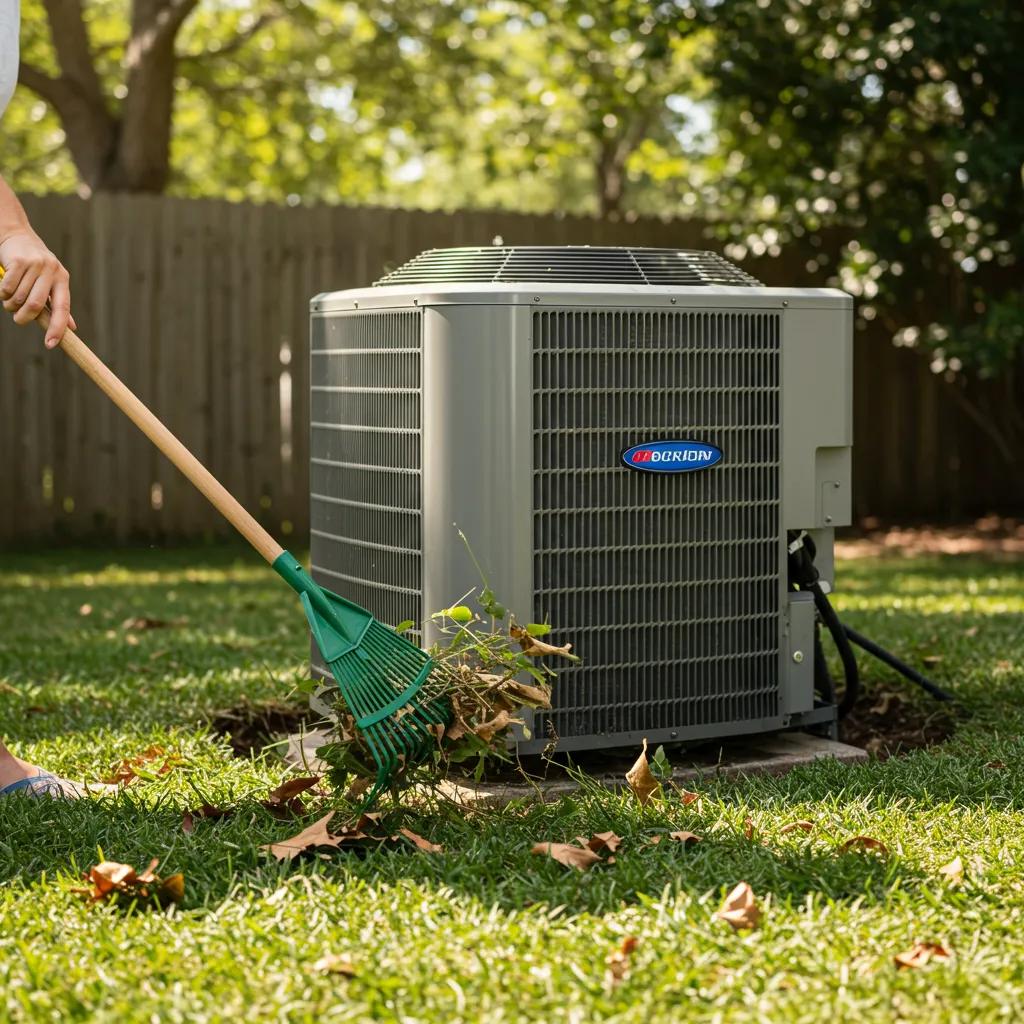
Taking care of your outdoor AC unit helps maintain its cooling efficiency, prevents airflow restrictions caused by debris, and supports overall cooling capacity. Simple tasks like clearing away vegetation, cleaning the fins, and checking the insulation on refrigerant lines can be done safely with basic precautions.
What Outdoor Unit Maintenance Tasks Can You Do Yourself?
Homeowners can easily remove leaves, grass clippings, and other loose debris from around the unit, rinse off the exterior coils, check the insulation on the refrigerant lines, and make sure the unit’s mounting pad is still level. These steps help keep airflow pathways clear and reduce wear and tear on the compressor and fan caused by vibrations.
How to Remove Debris and Clean Around Your Outdoor AC Unit
Start by turning off the power to the unit at the disconnect switch. Gently rake away any encroaching vegetation and use a soft brush to sweep dust and grime off the coil surfaces. Rinse the exterior with a garden hose on a low-pressure setting, washing away trapped particles without bending the delicate fins. Aim to keep at least six inches of clear space around the entire unit to ensure optimal airflow.
How Does Outdoor Unit Maintenance Improve Energy Efficiency?
When the condenser coils and fins are clean and airflow isn’t obstructed, your unit can reject heat more effectively. This allows the compressor to cycle less frequently, leading to improved efficiency and lower energy consumption—often resulting in cooling cost savings of 5–10 percent. It also extends the compressor’s lifespan by reducing mechanical stress.
When Should You Request Professional Outdoor AC Unit Service?
If you notice extensive damage to the fins, corrosion on the refrigerant lines, or hear unusual vibrations after cleaning, it’s time to call Daffan Cooling & Heating. We can perform professional coil straightening, refrigerant leak testing, and compressor evaluations to keep your outdoor unit operating safely and efficiently.
How to Use Your Thermostat for Maximum HVAC Energy Efficiency
Choosing the right thermostat, placing it correctly, and programming it wisely can slash your heating and cooling costs by 10–15 percent. Upgrading to a programmable or smart thermostat and using seasonal settings gives you precise control over your home’s comfort and energy consumption.
What Are the Benefits of Programmable and Smart Thermostats?
Programmable thermostats automatically adjust the temperature based on your daily schedule, while smart thermostats learn your household’s patterns and adapt in real time. Both types optimize your heating and cooling cycles, cut down on unnecessary runtime, and offer remote access so you can make adjustments from anywhere.
How to Program Your Thermostat for Seasonal HVAC Savings
For winter, set your thermostat 4–6°C lower at night and when you’re away. In the summer, raise it by 4–6°C during those same times to match your occupancy. Use the “hold” or “eco” modes for extended absences. If you have a smart thermostat, enable features like geofencing and humidity control to fine-tune performance and conserve energy effortlessly.
What Are Best Practices for Thermostat Placement and Settings?
Install your thermostat on an interior wall, away from direct sunlight, drafts, or heat-generating appliances. Maintaining consistent indoor temperature readings ensures your system cycles on and off accurately. Pair your temperature setbacks with ceiling fans for cooling and consider humidifiers for winter comfort to balance energy savings with occupant comfort.
When to Upgrade Your Thermostat or Call a Professional for Help
If your current thermostat doesn’t offer scheduling options, seems to be giving inaccurate readings, or resets itself unexpectedly after a power outage, it’s probably time to upgrade to a programmable or smart model. For any issues with wiring, checking thermostat compatibility, or setting up advanced zoning systems, rely on Daffan Cooling & Heating to ensure safe installation and optimal system integration.
When Should You Call a Professional HVAC Technician? Key Signs and Safety Tips
Even with the best DIY efforts, some HVAC issues require professional expertise, especially when safety is a concern. Recognizing the warning signs early can prevent costly damage and protect your household from hazards like refrigerant leaks or carbon monoxide exposure.
What Are the Warning Signs That DIY Maintenance Isn’t Enough?
If you hear hissing sounds that might indicate a refrigerant leak, see ice forming on your evaporator coils, experience uneven heating or cooling, notice persistent water leaks, or hear unusual noises from your system, these are signs that the problem goes beyond simple cleaning or filter changes. These symptoms often point to issues with sealed components, electrical systems, or gas lines that only a certified technician can safely address.
How Can Professional Maintenance Extend Your HVAC System’s Lifespan?
Licensed technicians perform thorough inspections, calibrate controls precisely, test all safety devices, and conduct detailed analyses of refrigerant levels and combustion. This high level of preventative care keeps your system operating at its best, reduces wear on critical parts, and preserves manufacturer warranties, potentially extending the life of your central air system and furnace to 20 years or more.
What Emergency HVAC Services Does Daffan Cooling & Heating Offer?
Daffan Cooling & Heating offers 24/7 emergency service for situations where your system isn’t heating or cooling, refrigerant leaks, fan or compressor failures, and investigations into carbon monoxide events. Our prompt professional intervention will restore safe operation, prevent further damage, and give you peace of mind when unexpected breakdowns occur.
How to Book Annual Maintenance Plans for Peace of Mind
Signing up for an annual maintenance plan guarantees scheduled tune-ups, priority service for emergencies, and discounts on repairs throughout the year. Contact Daffan Cooling & Heating today to set up a customized maintenance agreement that fits your HVAC system’s needs and your household’s comfort goals.
What Are the Benefits of Regular HVAC Maintenance for Homeowners in Texas?
Consistent HVAC maintenance, combining your DIY efforts with professional services, leads to reliable comfort, peak performance, and better indoor air quality. By addressing the specific demands of the Texas climate, homeowners can enjoy lower energy bills, a reduced risk of costly repairs, and a healthier living environment.
How Does Routine Maintenance Improve Energy Efficiency and Lower Bills?
Research from the EPA shows that regular filter changes, coil cleanings, and system inspections can boost your HVAC system’s efficiency by up to 15 percent. When your system runs more efficiently with less runtime and unobstructed heat transfer, it consumes less electricity, leading to noticeable savings on your monthly energy bills during both the heating and cooling seasons.
How Can DIY Maintenance Prevent Costly Repairs and Extend System Life?
Simple homeowner tasks like changing filters, clearing condensate lines, and cleaning coils help eliminate stress factors that can lead to compressor burnout, motor failures, and cracked heat exchangers. Consistent upkeep slows down wear and tear, delaying the need for expensive component replacements and providing significant long-term value for your home.
How Does Clean HVAC Equipment Improve Indoor Air Quality?
Regularly removing dust, pollen, and microbial buildup from filters, coils, and ductwork significantly reduces the circulation of airborne contaminants. This proactive cleaning helps minimize allergy triggers and prevents the growth of mold and mildew in damp areas, creating a healthier indoor atmosphere for everyone in your home.
Why Is Combining DIY Tasks with Professional Service the Best Approach?
Integrating your regular DIY maintenance with expert professional tune-ups creates a balanced and effective maintenance strategy. Your DIY tasks handle the frequent, lower-risk chores, while annual professional inspections cover critical components, electrical systems, and precise calibration. This synergy maximizes your system’s reliability, ensures warranty compliance, and aligns perfectly with Daffan Cooling & Heating’s commitment to keeping your home comfortable and safe.
Consistent DIY maintenance empowers you to protect your HVAC system’s performance, optimize energy use, and enhance your indoor air quality. By following structured tasks—like changing air filters, cleaning coils, flushing drain lines, and programming your thermostat—you build a solid foundation for your system’s longevity. And when it comes time for advanced diagnostics, sealed-system repairs, or crucial safety inspections, you can trust the experienced technicians at Daffan Cooling & Heating. We provide expert service, emergency response, and comprehensive maintenance plans specifically designed for Texas homes. Combining regular care with our expert support ensures year-round comfort and lasting value for your investment.


